WHAT IS MILLING? COMMON MILLING METHODS
- What is Milling?
Milling is one of the most important machining methods in mechanical manufacturing, widely used in the industrial sector. It is a metal-cutting process that utilizes a milling cutter, where the cutter rotates while the workpiece moves in various directions to achieve the desired shape.

Milling can be performed on various materials, including steel, aluminum, copper, stainless steel, and engineering plastics, with high precision and excellent surface finish. Due to its flexible cutting capabilities, milling is extensively applied in mechanical engineering, mold manufacturing, machinery production, automotive components, aerospace, and electronics industries.
- Operating Principle of Milling
During the milling process, the cutter rotates at high speed and performs cutting operations with the workpiece surface based on a pre-programmed trajectory. The main movements in milling include:
• Rotational movement of the milling cutter: This is the main movement, determining the cutting speed and surface quality of the product.
• Linear movement of the workpiece: The workpiece can move in different directions (X, Y, Z), depending on the type of milling machine and machining requirements.
- Auxiliary movements: These include raising and lowering the cutter, automatic tool changing, and adjusting the workpiece position.
As the milling cutter makes contact with the workpiece, the cutting edges gradually remove thin layers of material, forming the desired shape.
- Common Milling Methods
3.1. Classification by Cutting Method
Down Milling (Climb Milling)
Down milling is a milling method where the cutter’s rotation direction is the same as the workpiece’s feed direction. When the cutter contacts the workpiece, the cutting depth decreases from its maximum value to the minimum.

Advantages:
• Produces a smoother surface compared to up milling.
• Reduces workpiece deformation, making it suitable for finishing operations.
• Ideal for machining softer materials, reducing friction between the cutter and workpiece, thus extending tool life.
Disadvantages:
• Can cause vibrations due to the initial small cutting force that increases gradually.
Up Milling (Conventional Milling)
Up milling is a method where the cutter rotates opposite to the feed direction of the workpiece. As the cutter starts cutting into the workpiece, the cutting depth increases from the smallest to the largest value.

Advantages:
• Reduces initial impact load.
• Suitable for rough machining of hard materials, reducing tool wear.
Disadvantages:
• The cutter is more likely to slip on the workpiece surface if not clamped properly.
3.2. Classification by Cutter Type
Face Milling
Face milling is a method that uses a face mill or cylindrical milling cutter to machine flat surfaces.
Applications:
• Produces high-precision flat surfaces.
• Prepares workpieces for subsequent machining operations.
Slot Milling
Slot milling uses an end mill or disk cutter to create slots on the workpiece surface.

Applications:
• Machining key slots, guideways, T-slots, etc.
• Used in machine manufacturing and mold production.
Step Milling
Step milling is a method used to create steps on a workpiece by using a cylindrical or end milling cutter.

Applications:
• Machining steps on shafts and metal blocks.
• Used in manufacturing machine components and mechanical parts.
Profile Milling (Contour Milling)
Profile milling uses a form cutter to machine complex-shaped components.

Applications:
• Manufacturing molds, gears, automotive parts, etc.
• Producing high-precision components.
3.3. Classification by Milling Machine Type
Conventional Milling (Manual Milling)
Manual milling is a machining method using traditional milling machines operated manually or with simple mechanical control.
Advantages:
• Low investment cost.
• Easy to use, suitable for simple machining tasks.
Disadvantages:
• Accuracy depends on the operator’s skill.
• Difficult to machine complex components.
CNC Milling (Computer Numerical Control)
CNC milling is a modern machining method that uses computer-controlled milling machines to perform precise cutting operations.
Advantages:
• High accuracy with minimal errors.
• Capable of machining complex parts.
• Automation reduces reliance on operator skills.
Disadvantages:
• High initial investment cost.
• Requires CNC programming expertise.
- Applications of Milling in Industry
Milling is widely used in various industrial sectors, including:
• Mechanical engineering: Producing machine components and precision mechanical parts.
• Automotive and motorcycle industry: Machining engine components, frames, crankshafts, gears, etc.
• Aerospace industry: Manufacturing aircraft components, turbine blades, and engine housings.
• Mold industry: Producing plastic molds, stamping molds, and metal casting molds.
• Medical industry: Manufacturing medical instruments and implant components.
Refer to some common milling machines:
VC51 Vertical Machining Center
VB53α Vertical Machining Center
VM43RII / 53RII / 76RII Vertical Machining Center
- Conclusion
Milling is an essential machining method that plays a crucial role in manufacturing and production. With advancements in CNC technology, milling has become more optimized in terms of accuracy, efficiency, and application potential. Selecting the appropriate milling method enhances product quality, reduces production costs, and meets technical requirements across various industries.
Tags: Common Milling methods, Milling machines, What is Millings ?






